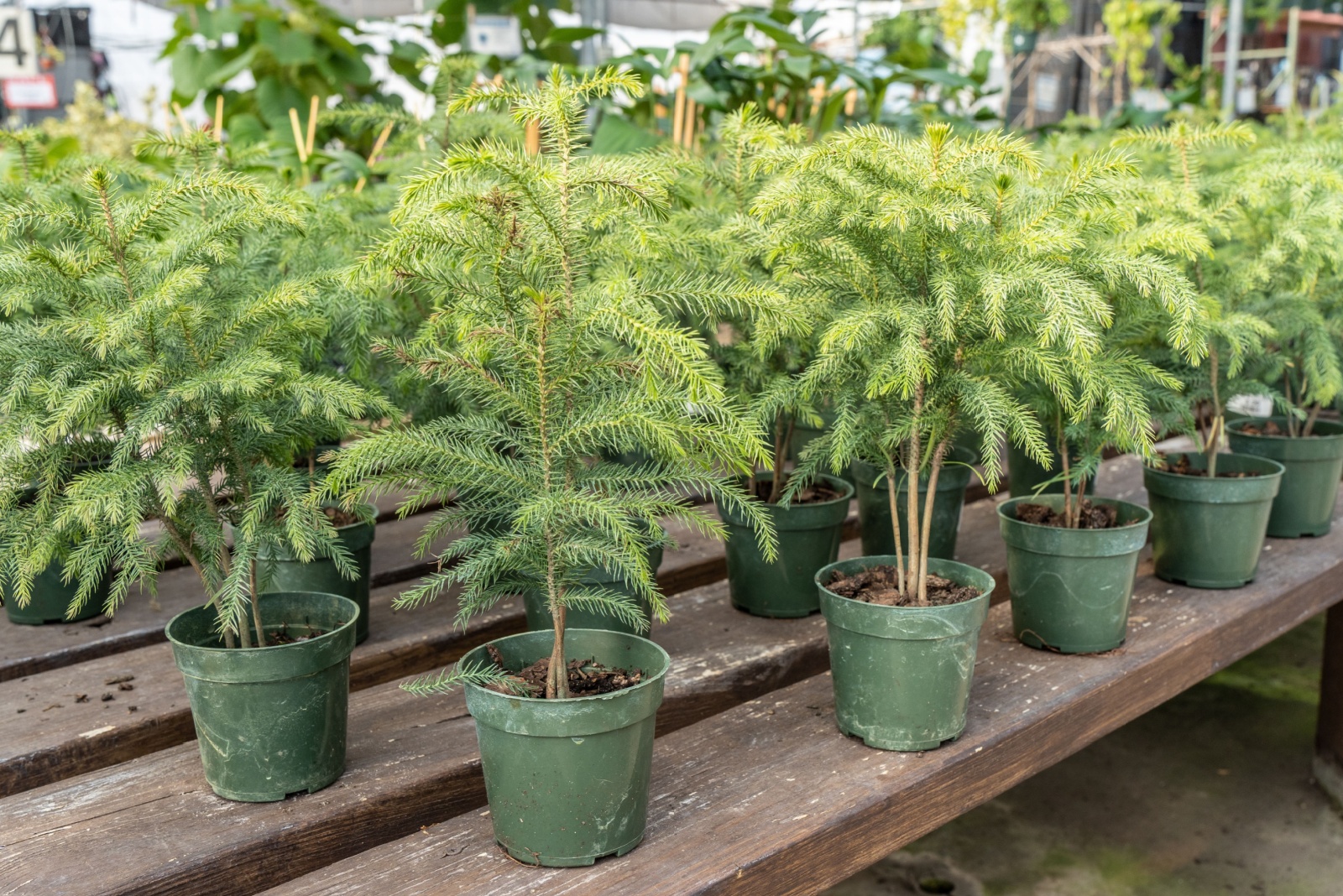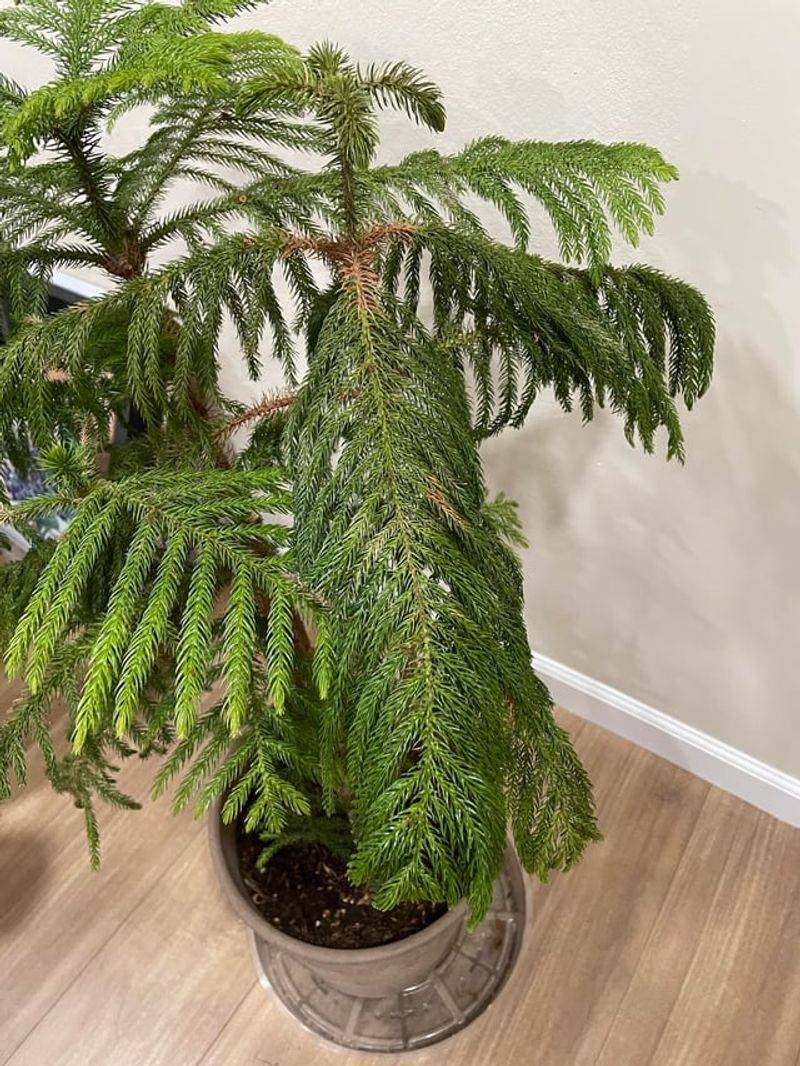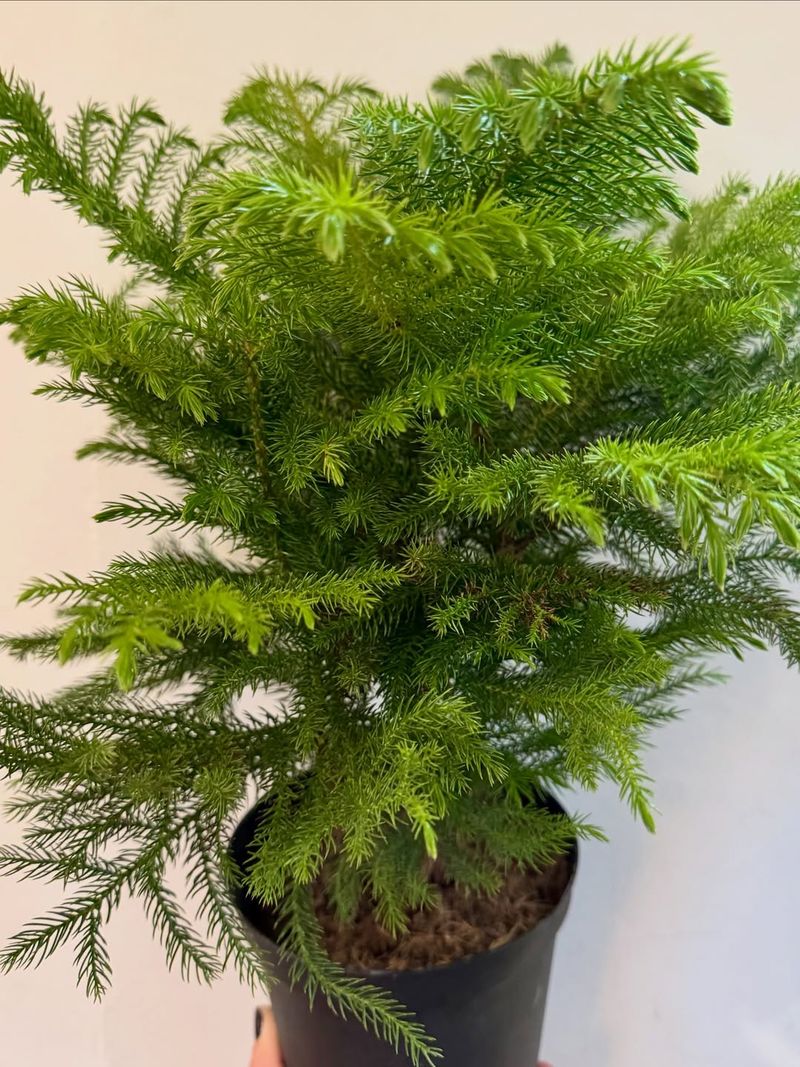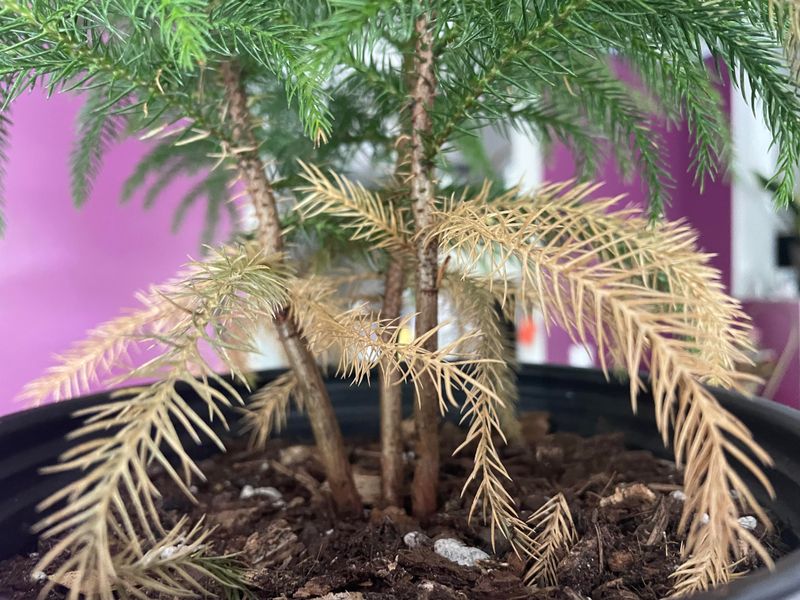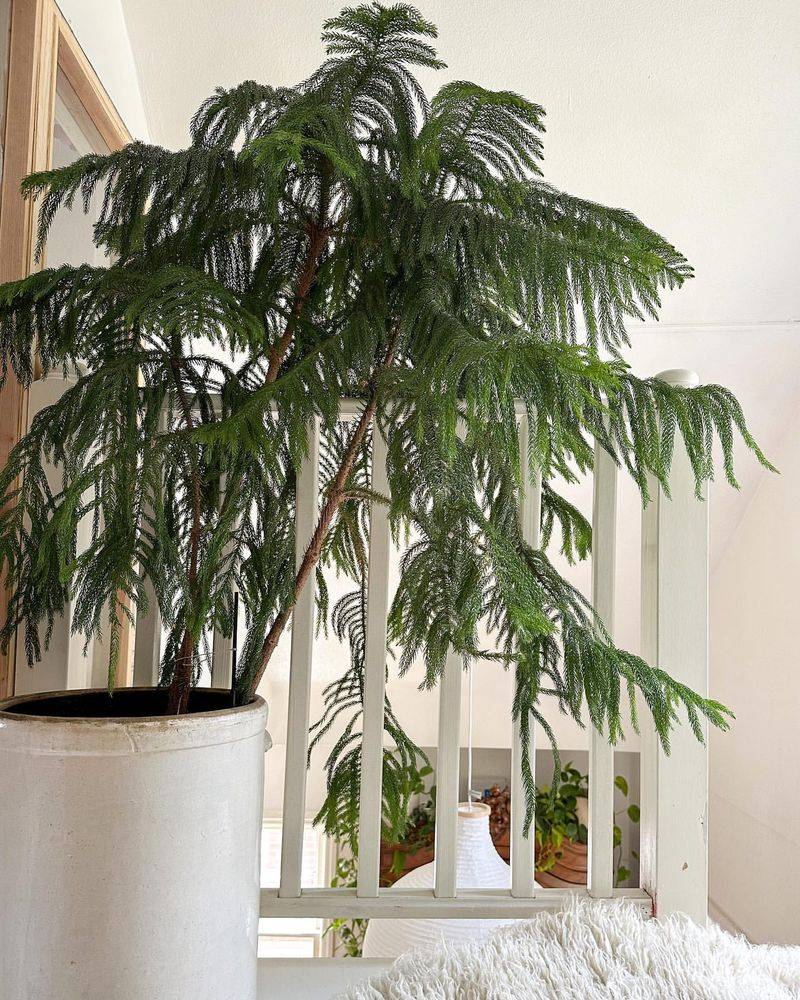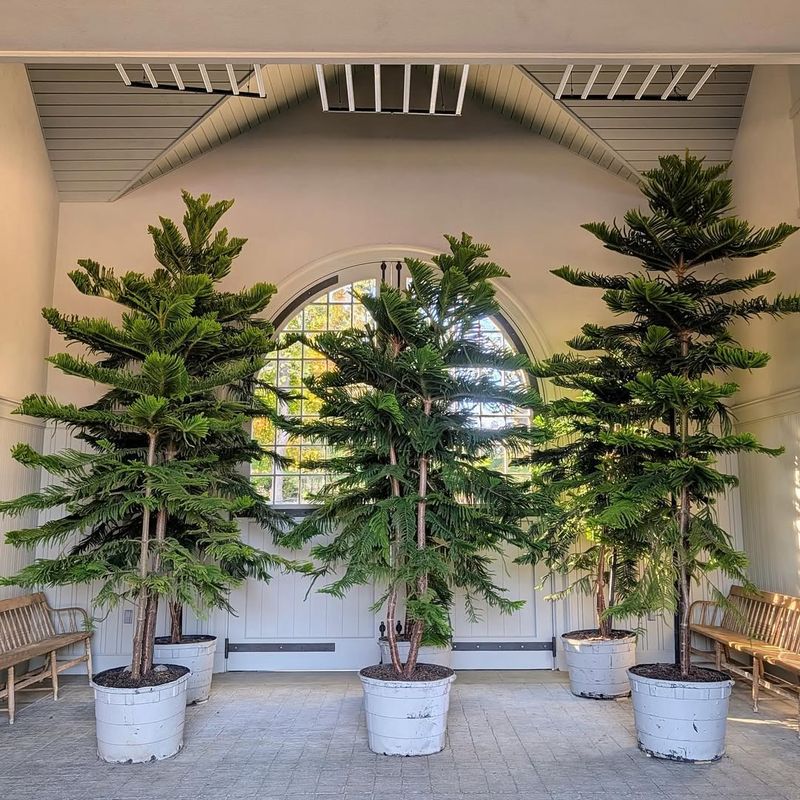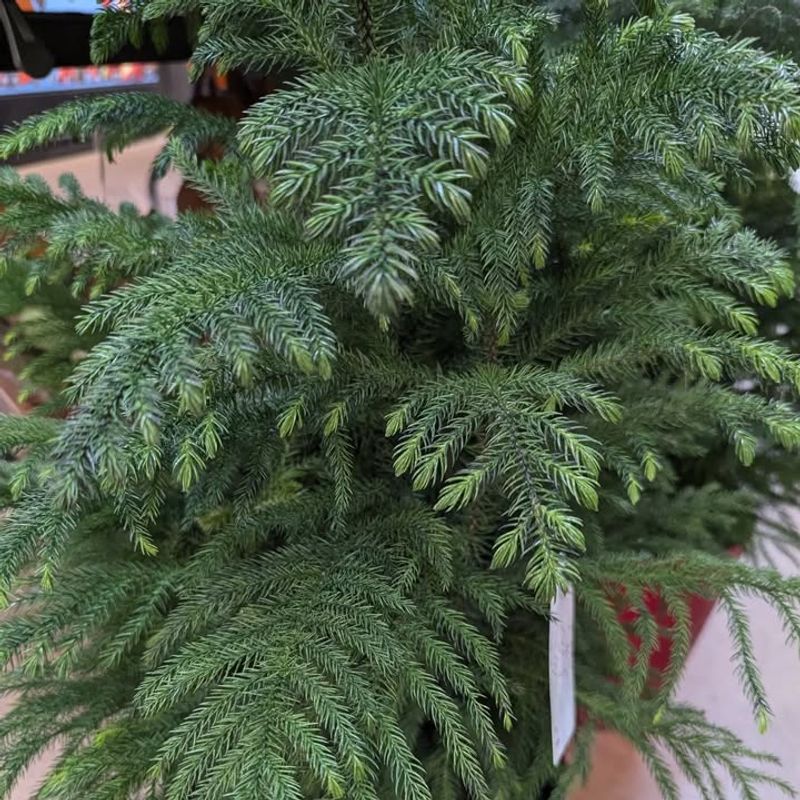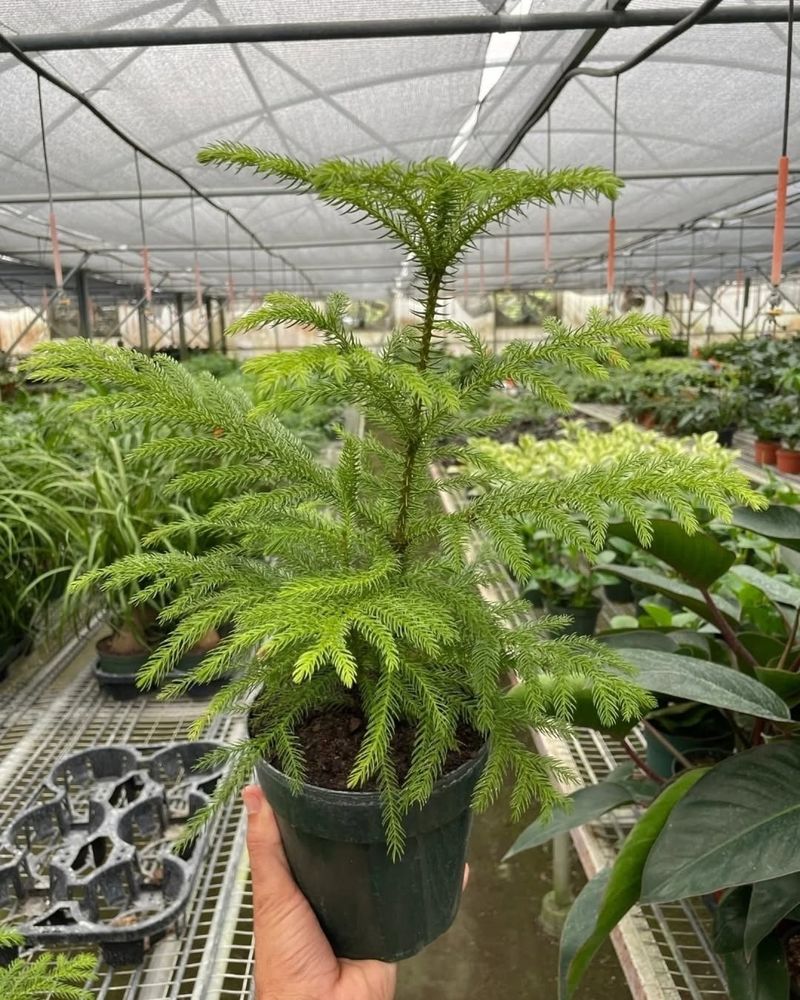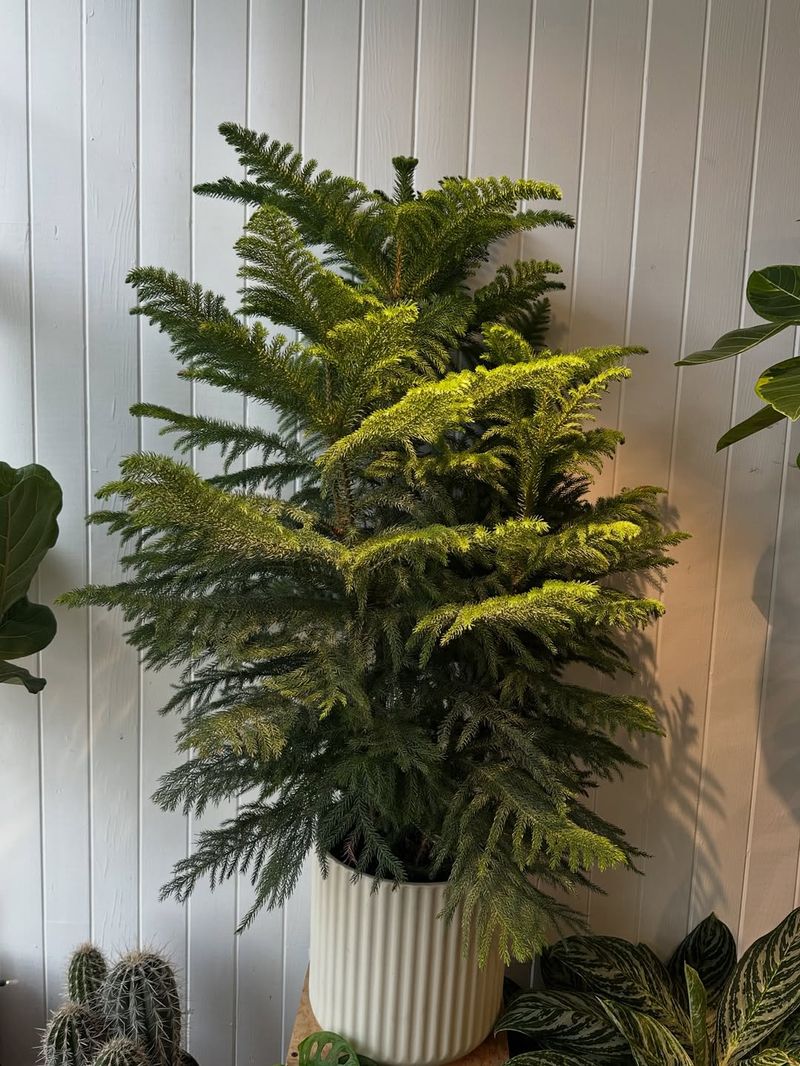Buying a Norfolk pine in California may seem as simple as picking the prettiest one on the shelf, but one wrong choice can turn holiday cheer into a headache.
These trees may look alike at first glance, yet some hide issues that don’t show up until they’re sitting in your living room dropping needles like there’s no tomorrow. California’s dry indoor air, tricky nursery conditions, and temperature swings mean the healthiest-looking tree isn’t always the one that thrives.
Choose poorly, and you’re stuck with a finicky plant that struggles from day one. Choose wisely, and you’ll have a living tree that stays lush long after the holidays fade.
Buying A Tree Already Stressed From Poor Store Conditions
Many stores keep Norfolk Pines in areas with terrible lighting and inconsistent watering schedules. By the time you spot one on the shelf, it might already be suffering from weeks of neglect.
California’s dry indoor air makes things even worse for these tropical plants. A stressed tree will continue declining at home no matter how well you care for it afterward.
Always inspect the needles closely and check soil moisture before purchasing to avoid bringing home a tree that’s already struggling.
Selecting A Tree Without Checking Root Health
Root-bound Norfolk Pines suffer terribly because their roots have nowhere left to grow inside cramped containers. You might not notice this problem until the tree stops growing or starts dropping branches at home.
Gently lift the pot and peek at the drainage holes to see if roots are circling or poking through. Healthy roots should be white or light tan, not dark brown or mushy.
California shoppers who skip this step often discover major root problems too late to save their investment.
Ignoring Signs Of Pest Infestation Before Purchase
Spider mites and scale insects absolutely love Norfolk Pines, especially when trees are weakened from stress. These tiny pests hide on the undersides of branches and can quickly spread throughout your home.
Look carefully for sticky residue, tiny webs, or discolored spots on the needles before buying. California’s warm climate means pests multiply faster once you bring an infected tree indoors.
Treating an infestation takes months of effort and often fails completely with severely affected trees.
Choosing A Tree With Uneven Or Damaged Branch Structure
Norfolk Pines grow in beautiful, symmetrical tiers that make them so appealing as living decorations. Once a branch gets damaged or withers, it never grows back in that spot.
Walk around the entire tree and examine it from all angles before deciding. Missing branches or lopsided growth will only become more noticeable as the tree matures over time.
California buyers often grab the first tree they see without realizing permanent damage ruins the classic Norfolk Pine silhouette they wanted.
Picking A Variety Unsuited For Indoor California Climate
Not all Norfolk Pines handle indoor conditions equally well, and some varieties struggle more than others in California’s low-humidity homes. Certain cultivars need higher moisture levels or cooler temperatures than typical houses provide.
Ask store employees about the specific variety and its indoor tolerance before committing to a purchase. Reading care tags carefully helps you understand what environment the tree actually needs.
Shoppers who ignore variety differences end up fighting a losing battle against their home’s natural conditions.
Falling For Artificially Dyed Or Painted Trees
Some retailers spray Norfolk Pines with glitter, snow effects, or dye to make them more festive during holidays. These chemicals block the needles from breathing properly and cause long-term damage.
The coating prevents photosynthesis and traps moisture, leading to brown, wilted foliage within weeks of purchase. Natural, untreated trees always perform better and live longer in your home.
California shoppers enchanted by sparkly trees often regret their choice once the decorations start stressing the plant beyond its limits.
Buying An Oversized Tree For Your Space
Norfolk Pines can grow several feet tall each year under good conditions, quickly outgrowing apartments and smaller homes. That cute three-foot tree might reach your ceiling within two years of purchase.
Measure your space carefully and research mature sizes before selecting a tree that seems perfect now. Moving or drastically pruning Norfolk Pines causes severe stress and often destroys them.
California renters especially regret buying large specimens when moving day arrives and their beloved tree won’t fit through doorways or in vehicles.
Selecting Trees Grown In Wrong Soil Mix
Heavy, dense potting soil holds too much water and suffocates Norfolk pine roots, eventually causing severe root rot and decline. These plants need well-draining, slightly acidic soil that mimics their natural tropical environment.
Squeeze the soil gently to check its texture and drainage quality before purchasing any tree. Soil that stays soggy or clumps together tightly will cause problems immediately in California’s irregular watering conditions.
Repotting into proper soil saves some trees, but many suffer irreversible damage before owners realize the problem exists.
Choosing Trees Kept In Drafty Or Extreme Temperature Areas
Norfolk Pines hate sudden temperature changes and will drop needles rapidly when exposed to cold drafts or heating vents. Stores often place plants near entrances where doors constantly open, subjecting trees to California’s outdoor temperature swings.
A tree that’s been sitting in these harsh conditions develops stress that continues affecting it for months afterward. Touch the needles to see if they feel brittle or if many are already browning at the tips.
Temperature-stressed trees rarely recover their full beauty even with perfect care later.
Impulse Buying Without Researching Care Requirements
Norfolk Pines demand consistent care including bright indirect light, regular watering, and humidity levels most California homes don’t naturally provide. Buying one without understanding these needs sets you up for failure and disappointment.
Spend time researching care requirements before shopping so you can honestly assess whether you can meet the tree’s needs. These aren’t low-maintenance plants despite their sturdy appearance and holiday marketing.
Unprepared buyers watch their trees decline rapidly and feel guilty about wasting money on a plant they couldn’t properly maintain.

